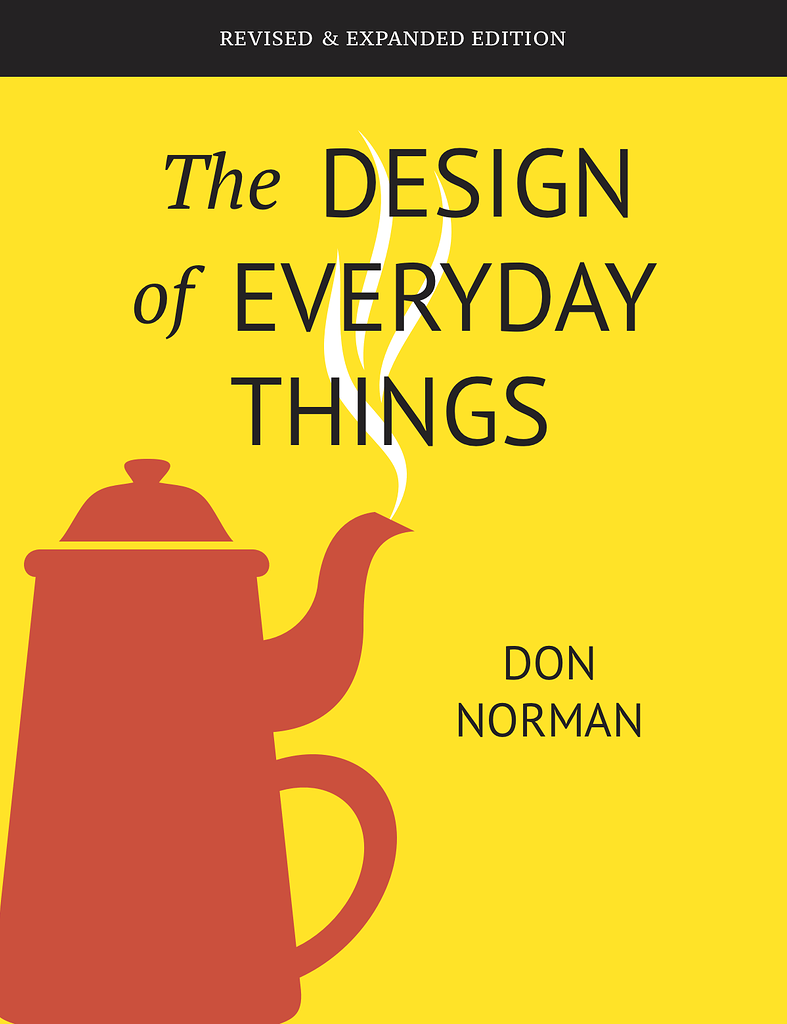Picture this: You’re trying to figure out how to use a new coffee machine. The instructions are confusing, the buttons are labeled in a way that makes no sense, and you feel overwhelmed. You’ve probably encountered this frustrating experience, and it’s just one example of how poor design can disrupt our daily lives. Fortunately, there’s a solution: understanding the principles outlined in the seminal book, “The Design of Everyday Things” by Don Norman, a leading expert in design and cognitive science.

Image: www.extremraym.com
This book, often referred to as “DOET,” is a treasure trove of insights that can empower us to navigate the complexities of technology and everyday objects with ease. It explains the psychology behind design, illuminating the critical factors that make an object both functional and enjoyable. Whether you’re a designer, developer, or simply someone who wants to understand why certain products are easier to use than others, “DOET” offers invaluable lessons that can revolutionize your perspective on how we interact with the world around us.
Delving into the Design of Everyday Things: Essential Principles
At its core, “The Design of Everyday Things” advocates for a design philosophy that prioritizes the user’s needs and experience. Norman emphasizes that good design is intuitive, predictable, and ultimately, a reflection of human-centered thinking. Understanding and applying his key principles can significantly improve the usability of any product or service. Here are some of the most impactful concepts explored in his book:
1. Visibility and Affordances
Imagine opening a door for the first time. You instinctively know to push or pull because the handle or knob “affords” a specific action. “Affordance” in design refers to the perceived properties of an object that tell us how to use it. Similarly, “visibility” is about making controls and actions clear and easily discernible. A clearly labelled button on a remote control, for example, ensures a more intuitive experience.
2. Feedback and Constraints
Let’s say you’re typing on your computer. Each keystroke provides immediate feedback, indicating the letter you’ve just entered. This feedback, combined with constraints, helps us navigate the system effectively. Constraints, like the limited range of motion on a slider, help us understand the boundaries of what we can do and make it easier to use the object correctly.

Image: productnotes.com
3. Mapping and Consistency
Do you ever struggle with finding the right button on your car dashboard? A proper “mapping” between the physical controls and their functions is crucial for intuitive design. This means ensuring that controls and their actions align logically, so they make sense to the user. Consistency is equally important. Imagine if every website you visited had a different layout – it would be incredibly confusing. Consistency across applications and devices ensures a seamless and familiar user experience.
4. Error Prevention and Forgiveness
We all make mistakes, and good design anticipates this. Error prevention involves designing a system that makes mistakes less likely to occur. By offering clear warnings or guidance, the user is less likely to accidentally make a wrong selection. Similarly, “forgiveness” means designing systems that are resilient to errors. If a user accidentally deletes a file, a “undo” option can help recover the mistake.
Beyond the Book: Applying DOET Principles in Our Lives
The principles outlined in “The Design of Everyday Things” go beyond the realm of technology and product design. They’re applicable in a wide range of contexts, from organizing our homes to improving communication and personal relationships. For instance, by applying these principles to our communication, we can be more mindful of how our words and actions are perceived. Clear and concise language, providing relevant explanations, and offering actionable feedback are key to ensuring effective communication and a positive user experience.
Applying the concepts of affordance and visibility can make it easier for us to learn and retain information. Structured environments, like well-organized closets and labelled shelves, can facilitate a more efficient and satisfying experience. The goal is not merely to create visually appealing products or spaces, but rather to create a seamless and positive interaction between the user and the world.
The Design Of Everyday Things Pdf
Revolutionizing Our Perception: Embracing the Design of Everyday Things
“The Design of Everyday Things” is both a powerful tool and a significant philosophical shift in our understanding of design. It moves beyond the pursuit of aesthetics and functionality to emphasize the importance of human-centered thinking. Don Norman’s seminal work invites us to see the world through a different lens, one that prioritizes the user’s needs and prioritizes creating intuitive, enjoyable experiences. By embracing these principles, we can not only improve the design of the things we use but also enhance the quality of our own lives.
So, as you navigate your world, take a moment to consider the design of the things you encounter. Ask yourself: Is it intuitive? Is it predictable? Does it make sense? If the answers are yes, then you’re experiencing the fruits of well-designed products and systems. If not, try to deconstruct what’s causing the frustration—the lack of visibility, confusing mapping, or poor feedback—and use those insights to advocate for better design, both individually and collectively.
“The Design of Everyday Things” serves as a powerful reminder that good design is not a luxury, but a necessity. It’s a force that can transform our interactions, improve our productivity, and ultimately, make our lives more fulfilling.
To explore further resources and delve deeper into the world of human-centered design, consider:
- Visiting the website of Don Norman’s company, the JND (the Nielsen Norman Group)**
- Reading other books by Don Norman, such as “Emotional Design” and “Living with Complexity”
- Exploring design journals and websites dedicated to user experience (UX) and human-computer interaction (HCI)
Embrace the power of design, and let it shape your interactions with the world in meaningful and positive ways.






